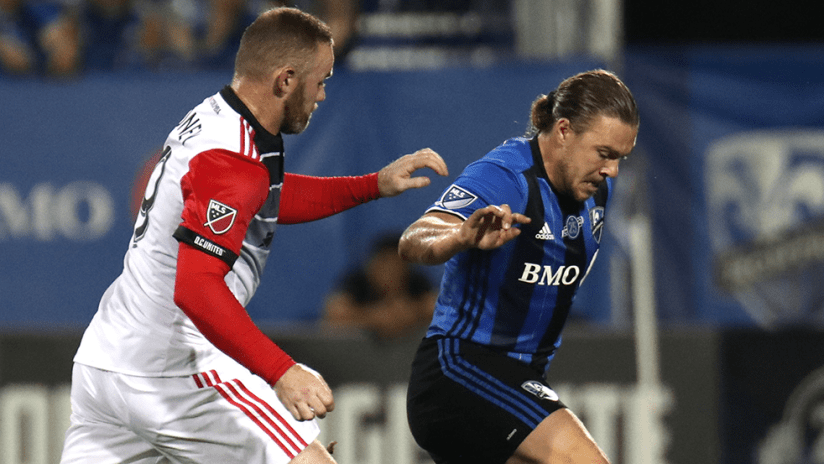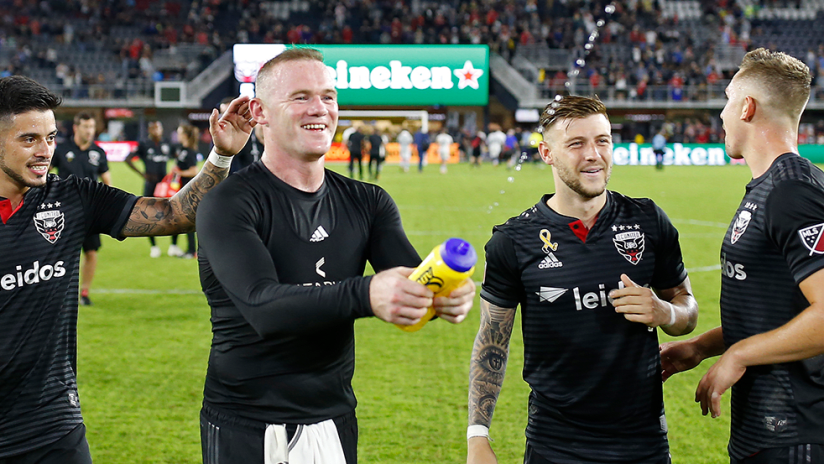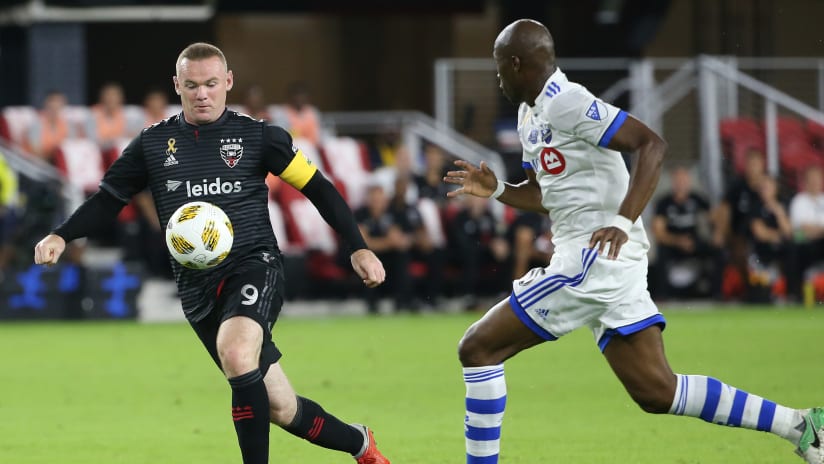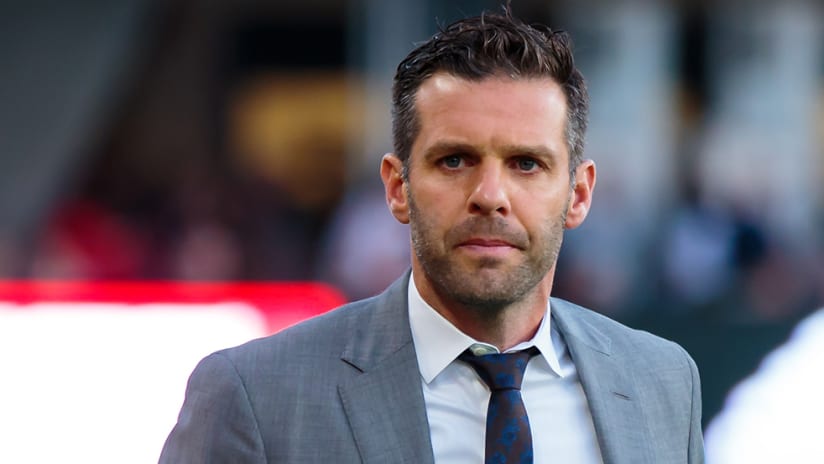It comes down to this. For these two teams, the other eight months of MLS play have been building toward one night. The winner likely gets the final playoff spot in the Eastern Conference, and the other… well, Cabo is nice in November.
The Montreal Impact currently hold the sixth and final playoff spot in the East with 40 points. D.C. United enter with 35 points and two games in hand. The gap could be anywhere from two to eight points by the end of the night. Eight points would likely be too much for D.C. to overcome in five games; two points should represent a countdown.
The losing team will surely provide quotes to say they’ve still got a chance, but ... nah.
It’s surprising to most that Montreal has held on this long. Three games ago, nobody outside of Quebec had the Impact slotted into a playoff spot. With D.C.’s form and games in hand — home games, at that — it was only a matter of time before D.C. overcame them. But Montreal pulled off a hugely impressive month to change the conversation, destroying the Red Bulls, 3-0, then the Union, 4-1, and tying NYCFC, 1-1. What appeared likely to be a zero-point month turned into a seven-point stretch. And none of it was a fluke. Montreal deserved every point, if not more.
They have deployed a super compact 4-1-4-1 that opponents have struggled to figure out. Few teams in MLS commit to strict, tight distances between their defensive lines.
General theory suggests a team should have 25-30 yards from defenders to strikers, or 8-10 yards between lines. When teams get stretched beyond the 10 yards, they become vulnerable. When you watch a game, though, teams often lose those distances. Sometimes it’s on purpose, usually it’s not. But the Impact have committed to, and succeeded at it. They rarely get caught pressuring one person at a time. If, or when, they get stretched, they call the strikers back and retreat until they get the proper distances again. As such, they’ve been stout defensively, not giving up more than one goal in a game since July.
Some — looking at you, Matt Doyle — have said they “bunker.” I don’t like that description. The idea of a “bunker” suggests weakness or an overly defensive mindset. I don’t see what Montreal are doing as overly defensive; I see it as the natural consequence of disciplined defending.
They have a focused goal of maintaining proper distances and sometimes that means a team drops deep. Remember the most basic principles of defending: They don’t play behind us and they don’t play through us. To ensure they don’t play behind us, we must drop when we don’t have pressure on the ball. What happens with most teams is that the defenders drop, but the midfield stays, creating a gap. Montreal never allow that. They drop as a unit.
They often start their pressure higher up the field, but the moment they can’t get proper pressure on the ball, they retreat three yards to protect the space behind them, regroup, and try again. Watch this seemingly muted, yet impressive video of their defensive movement:
If most teams executed what they discuss in the meeting room, it would look like what Montreal does here. To me, it’s not a slight on Montreal that they defend near their own box at times — would you rather get stretched or would you rather drop deeper? We should be more concerned that other teams don’t do it more often. When your team gives up space between the lines, you should only hope they defended like Montreal.
On Saturday, it’ll be up to D.C. to move that Montreal block out of position. D.C. have proven to be a slick passing team over the last couple months, but it’s be a particularly dangerous matchup for what D.C. have done well recently.
D.C. start most of their dangerous buildups through Wayne Rooney and Lucho Acosta in the middle of the field. Rooney drops off the center backs and collects a pass and turns or lays it off to a teammate (quickly becoming the famous LuchoRoo 1-2).
Against Montreal, however, Rooney will struggle to find those gaps in front of the center backs. Montreal pack that part of the field, largely through the positioning of the most disciplined defensive midfielder in the league, Samuel Piette. Piette rarely leaves his post right in front of his center defenders. The Canadian will try to position himself in front of Rooney all afternoon, and it could look more like this:
How will D.C. adjust if Montreal take away their favorite trick? Impact success probably means Rooney and Acosta see less of the ball, and the wingers — likely Yamil Asad and Ulises Segura or Zoltan Stieber — see more of it. Whereas Rooney and Acosta tend to be the facilitators and set up each other or the wingers, it could be the other way around.
The wingers would have the space open in the wider areas and could look to set up Rooney, who will have to spend more time trying to get forgotten by Piette and the center backs than attempting to get involved. Specifically, look for United to attempt sending the early ball into the the box, trying to catch Montreal’s center backs running toward their own goal.
The game will likely be won and lost on those moments. Will the D.C. wide players be able to wreak havoc? Or will they spill turnovers on which Montreal can capitalize?
It’s not an overly complicated chess match: Each team knows what the other will try to do. The final playoff spot in the East should come down to good, old-fashioned execution.













